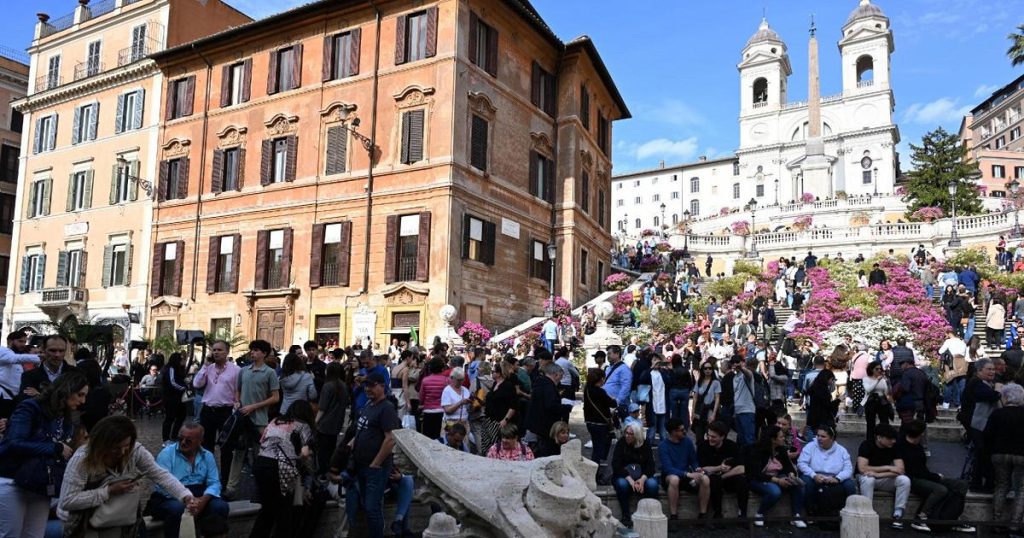The iconic Spanish Steps, known as the Scalinata di Trinità dei Monti in Rome, has been featured in various films and incidents throughout history. In the movie “Roman Holiday,” it was beautifully captured in all its glory, while in “Poliziotto Sprint,” it became the set for a crazy car chase. While such scenes are considered unthinkable today, there have been bizarre incidents, such as a Saudi man driving a Maserati down the steps and a tourist throwing a scooter down them. However, more concerning are the acts of violence that have occurred, often involving football fans in this beautiful corner of Rome.
The Scalinata di Trinità dei Monti has always been an iconic monument in the Italian capital, but has recently come under scrutiny in a report by the Court of Auditors of Paris. The report criticizes Italy for its “approximate” management of five French churches in Rome, including Trinità dei Monti, and claims ownership of the Steps. The Steps were built with French funds in the early 18th century and maintained by the Pieux établissements de la France, but more recently by the Municipality of Rome. The stunning architecture, connecting the Pincio to Piazza di Spagna, was commissioned by Cardinal Pierre Guérin de Tencin and funded by patron Étienne Gueffier.
The Pieux établissements de la France a Rome, also known as the Pio Stabilimenti Della Francia, has a priceless heritage that includes several churches in Rome and properties in the city center, such as Villa Medici. The French judges have criticized the fact that these assets are not being adequately utilized to maintain the churches. The French Embassy to the Holy See oversees this foundation through an administrator and treasurer. The issue of these French properties in Rome has created tension between Paris and Rome, particularly regarding the Trinità dei Monti area, which traces back to a bequest from French diplomat Stefano Gueffier.
Stefano Gueffier, a French diplomat who worked at the French Embassy in the Vatican, left two wills upon his death in 1660, one concerning his assets in France and the other in Italy. In his Italian will, he requested the construction of the Spanish Steps, with the obligation to spend twenty thousand scudi. This amount was later halved to favor his nephew, which was deemed insufficient by the French Minims of Trinità dei Monti. In 1717, Pope Clement XI ordered the funds to be quantified, leading to the construction of the Steps. The issue of French properties in Rome has a long history, with the Fascist era prompting demands for their return.
The ongoing debate over the ownership and management of the Scalinata di Trinità dei Monti highlights the complex history and relationships between France and Italy. The French judges’ criticism of the handling of these assets in Rome adds another layer to the already intricate dispute. The steps serve as a reminder of the rich cultural heritage and architectural beauty of Rome, but also reveal the challenges and controversies surrounding the preservation and upkeep of historic landmarks. As one of the most recognizable landmarks in the city, the Spanish Steps continue to captivate visitors and locals alike, despite the ongoing legal and administrative struggles involving their ownership and maintenance.


